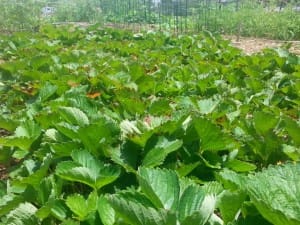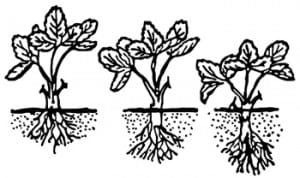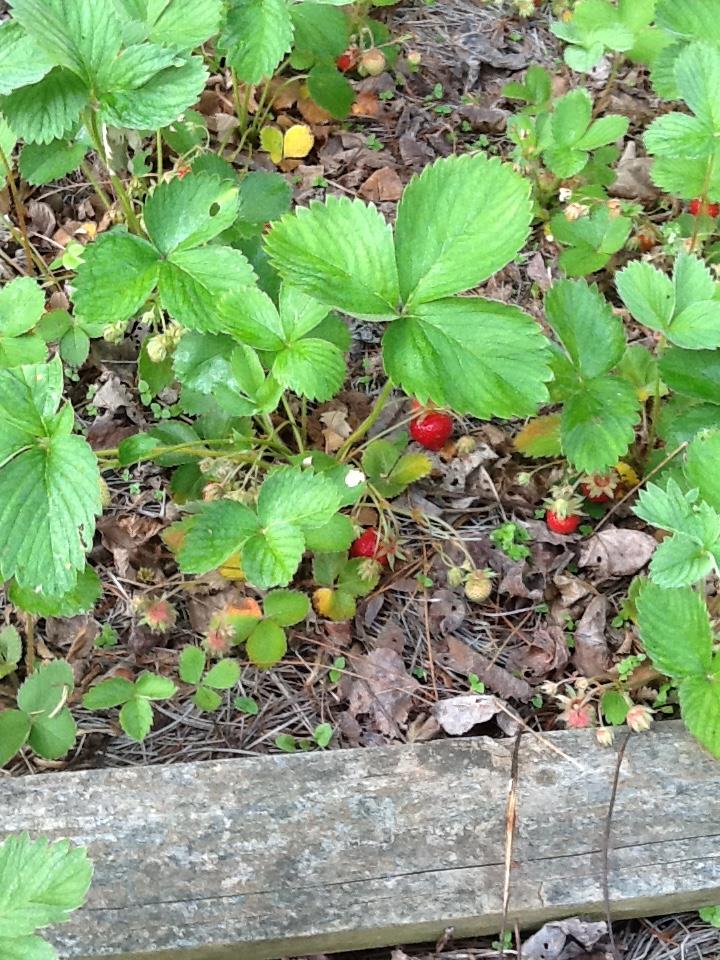Strawberries can be a welcome addition to the Georgia community or school garden. And, spring is the time to plant!
 Traditionally in north Georgia strawberries are grown in a matted row system where initial plants are set two feet apart at spring planting. That summer the runners are allowed to fill in the rest of the bed. This set up is perfect for raised beds or bed plots.
Traditionally in north Georgia strawberries are grown in a matted row system where initial plants are set two feet apart at spring planting. That summer the runners are allowed to fill in the rest of the bed. This set up is perfect for raised beds or bed plots.
Treat your strawberry bed as a perennial bed. You will need an area that is in full sun and contains well drained soil. Avoid planting where you have been growing peppers, tomatoes, or potatoes. These plants are susceptible to verticillium wilt and so are strawberries. The UGA publication Home Garden Strawberries is a great resource.
Varieties of Strawberries
Varieties recommended for early fruiting for north and middle Georgia are Earliglow, Sweet Charlie, and Delmarva. For south Georgia look for Chandler, Camarosa, and Sweet Charlie. Early season varieties are best for school gardens as you should get fruit before school lets out for the summer.
For mid-season fruiting look for Allstar. Purchase plants that appear to be disease-free from a reputable supplier. This can be a local store or a mail order supplier. You will probably have more varieties to choose from if you use a mail order supplier.

Care of Strawberries
The most important part of planting strawberries is the placement of the crown. The top of the crown needs to be above the soil line. Otherwise, you will probably have rot. Set the plants two feet from the bed edge and from each other. Remember, runners will fill in. Remove flowers the first year to encourage more blossoms, and fruit, next year.
Weeds are the number one problem with strawberry plants. Mulch between plants and use hand pulling or hoeing to remove stubborn weeds. Strawberries need 1 to 1 1/2 inches of water a week.
Birds and rodents love strawberries as much as we do. Raised beds deter rodents. Some gardeners use netting. A problem with netting is birds and small animals getting caught in the net. Some gardeners report success with loosely hanging aluminum pie pans around the beds to deter birds. The best practice is to pick the fruit as soon as it is ripe, before other hungry eaters find it.
During the second spring, after you have picked all of your berries, get ready for next year. By this point runners have filled in and if you don’t thin the bed you will have too many plants for that area. You need to get rid of about two-thirds of the plants in order to have healthy plants for next year. Pot up the extras and have a fund raising plant sale!
As always your local UGA Extension agent is a great resource for you.
Happy Gardening!
- ParSLAY the Day! - June 12, 2024
- 6th Annual Great Southeast Pollinator Census - May 28, 2024
- Are you ready for Pepper Palooza? - July 5, 2023

A delicious and relatively easy to grow addition to any garden!
Very useful and informative article. Thank you for sharing.
Thank you for the help full of information,I live in the Piedmont region and don’t see when would be the safest time to plant to prevent frost bite
Frost can be tricky but you can protect new plants by covering them. Also, consider planting strawberry plants in the fall so they will be ready for a spring bloom.